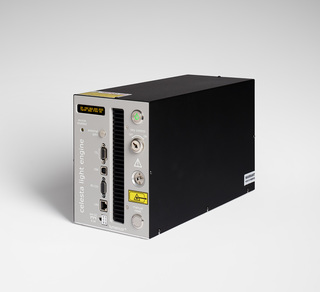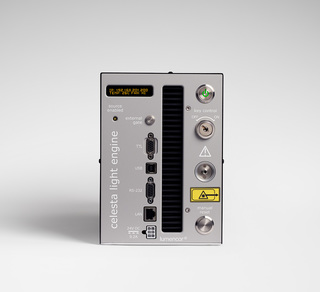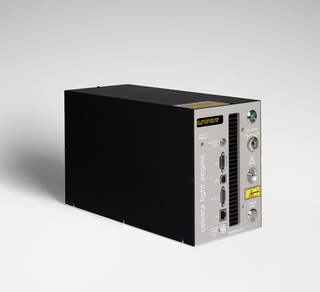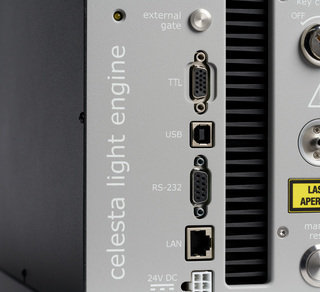CELESTA Light Engine
Lumencor’s CELESTA and CELESTA quattro Light Engines incorporate arrays of 4–7 individually addressable solid-state lasers. CELESTA Light Engines marry the high brightness of LASERs with specialty beam shaping to deliver controlled, consistent, homogeneous illumination required for dedicated applications. CELESTA Light Engines are at home on CrestOptics spinning disk systems, spatially resolved transcriptomic platforms, and other advanced imaging applications demanding power, speed, and uniformity.
"The CELESTA Light Engine allows us to multiplex up to five probes for high-content, high-throughput imaging without sacrificing resolution. The selection of lines allows us to image difficult specimens despite lots of overlap in excitation and emission of the probes."
Eric Griffis, Director at the Nikon Imaging Center at University of California San Diego
Application Bibliography
| Application | Area Product | Reference | Date |
|---|---|---|---|
High-throughput in situ sequencing interrogation of the expression of 104 cell-type marker genes at cellular resolution in the mouse cerebral cortex. | Transcriptomics CELESTA Light Engine | 2024 | |
Multiplexed immunofluorescence imaging on large (average area = 0.25 mm2) sections of healthy, regenerating, and embolized human liver tissues | Immunofluorescence Microscopy CELESTA Light Engine | Cell atlas of the regenerating human liver after portal vein embolization. Nat Commun (2024) 15:5827 A Brazovskaja, T Gomes, B Treutlein et al. | 2024 |
Imaging laminar flow of peripheral blood mononuclear cells (PBMC) and neutrophils during microfluidic acoustophoresis | Microfluidics CELESTA Light Engine | Label‐free separation of peripheral blood mononuclear cells from whole blood by gradient acoustic focusing. Sci Rep (2024) 14:8748 J Alsved, MR Charan, P Augustsson et al. | 2024 |
Tracing interactions of polycomb group (PcG) proteins with chromatin by Optical Reconstruction of Chromatin Architecture (ORCA) | Transcriptomics CELESTA Light Engine | 2024 |
Laser Light Engine Stability
In this video, Dr. Andrii Repula discusses his testing of the CELESTA Light Engine for consistency, power, and stability using continuous wave illumination, pulsed illumination, and time-lapse imaging.









